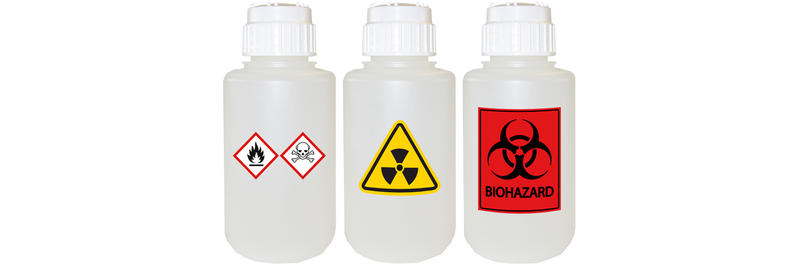The Single Strategy To Use For Reclaim Waste
The Single Strategy To Use For Reclaim Waste
Blog Article
The Of Reclaim Waste
Table of ContentsSee This Report about Reclaim WasteReclaim Waste Things To Know Before You BuyThe Buzz on Reclaim WasteReclaim Waste Fundamentals Explained8 Simple Techniques For Reclaim Waste
Discover the types, events, and forms of liquid waste. Residential sewage waste describes the waste and products from a household septic container. This kind of waste is developed by people in houses, schools, and other structures. This only consists of septic tanks that have a drain area. The appropriate administration and disposal of domestic sewer waste need liquid waste to be transferred to a sewage therapy plant where the correct methods and tools are related to cleanse and dispose of waste.
Commercial waste typically includes prospective risks, such as combustible products or a mix of fluid and solid waste items, and needs an advanced and detailed disposal procedure. The disposal of business waste commonly entails the filtering of waste before transportation to make certain risk-free and correct disposal. Hazardous waste is produced from byproducts and runoff of commercial processes and manufacturing.
This type of waste can not make use of the very same sewer management transportation or processes as septic or industrial fluids. The hazardous waste management procedure needs the evaluation and screening of fluid waste prior to it undertakes the disposal process (liquid waste disposal). Drainage waste is the fluid waste that originates from runoff and excess stormwater in very inhabited areas or cities
Overflow waste can trigger contamination and flooding otherwise managed properly. Find out more regarding sewage system cleaning and waste management. Making sure appropriate waste monitoring can protect against catastrophes and reduce environmental damage. Both people in household settings and professionals in commercial or production industries can gain from recognizing the processes and guidelines of liquid waste monitoring.
The 7-Minute Rule for Reclaim Waste
Contact PROS Solutions today to find out about our waste monitoring and disposal solutions and the correct methods to look after the liquid waste you generate.
(https://myspace.com/reclaimwaste1)This so-called 'wastewater' is not just an essential resource but, after treatment, will be launched to our land, rivers or the ocean. Utilized water from bathrooms, showers, baths, kitchen sinks, washings and industrial processes is recognized as wastewater.

water made use of to cool down machinery or clean plant and devices). Stormwater, a kind of wastewater, is runoff that flows from farming and metropolitan locations such as roof coverings, parks, yards, roadways, courses and seamless gutters right into stormwater drains pipes, after rainfall. Stormwater moves unattended directly to regional creeks or rivers, ultimately getting to the ocean.
Reclaim Waste Fundamentals Explained
In Queensland, a lot of wastewater is dealt with at sewer therapy plants. Wastewater is moved from residential or commercial sites through a system of sewage systems and pump stations, called sewerage reticulation, to a sewer treatment plant. City governments construct, maintain and run most sewage therapy plants. Operators are licensed under the Environmental Management Act 1994 to discharge cured wastewater at an appropriate environmental requirement into rivers.
The Division of Natural Resources suggests city governments concerning managing, operating and keeping sewage systems and therapy plants. In unsewered areas, regional federal governments might call for owners to install specific or household sewer therapy systems to treat residential wastewater from bathrooms, cooking areas, restrooms and washings. The Division of Natural Resources authorizes using family systems when they are shown to be reliable.
A lot of stormwater obtains no therapy. In some brand-new communities, treatment of some stormwater to get rid of clutter, sand and gravel has started making use of gross pollutant traps. Wastewater therapy takes place in four stages: Removes solid matter. Larger solids, such as plastics and various other things wrongly discharged to sewage systems, are gotten rid of when wastewater is gone through displays.
Wastewater after that flows into big containers where solids settle and are eliminated as sludge. Oil and scum are skimmed from the surface. Uses tiny living organisms referred to as micro-organisms to break down and eliminate continuing to be liquified wastes and great bits. Micro-organisms and wastes are integrated in the sludge. Gets rid of nitrogen and phosphorus nutrients that might trigger algal flowers in our rivers and intimidate marine life.
Not known Facts About Reclaim Waste
Nutrient removal is not available at all sewer therapy plants since it calls for costly specialized equipment. It is becoming a lot more typical in Queensland. Clear fluid effluent created after therapy might still contain disease-causing micro-organisms. If this effluent is released into rivers such as rivers or the sea, the micro-organisms will eventually pass away out.

This usually implies wastewater needs to be dealt with or impurities gotten rid of prior you can try this out to it can be discharged to waterways. The majority of wastewater flows into the sewerage system. Under the Act, city governments provide approvals and permits for eco relevant activities (Periods) including wastewater launches that may have a neighborhood effect. The division administers authorizations and licences to ERAs entailing wastewater releases that may have a local or statewide influence.
4 Easy Facts About Reclaim Waste Shown
Or else, samples are considered research laboratory evaluation. Frequently lots of examinations are required to develop the degrees of each of the various toxins such as oils, heavy metals and pesticides in water. Surveillance supplies accurate information regarding water top quality and can validate that permit problems are being fulfilled. The info acquired through monitoring gives the basis for making water quality choices.
Report this page